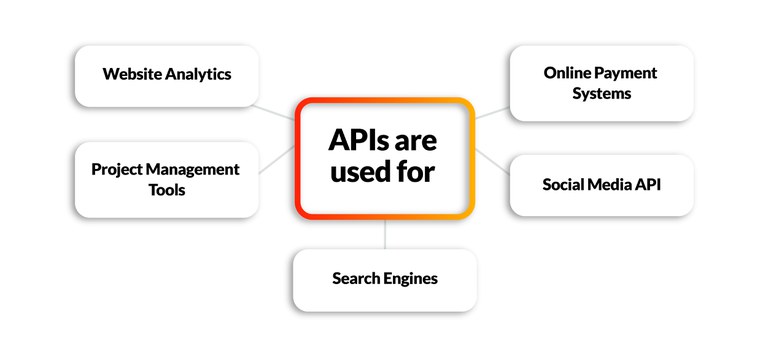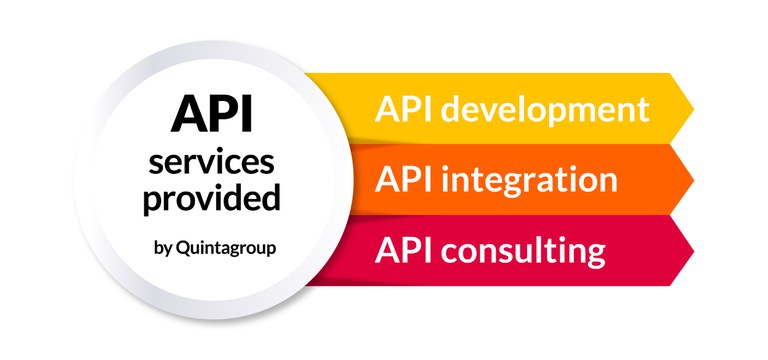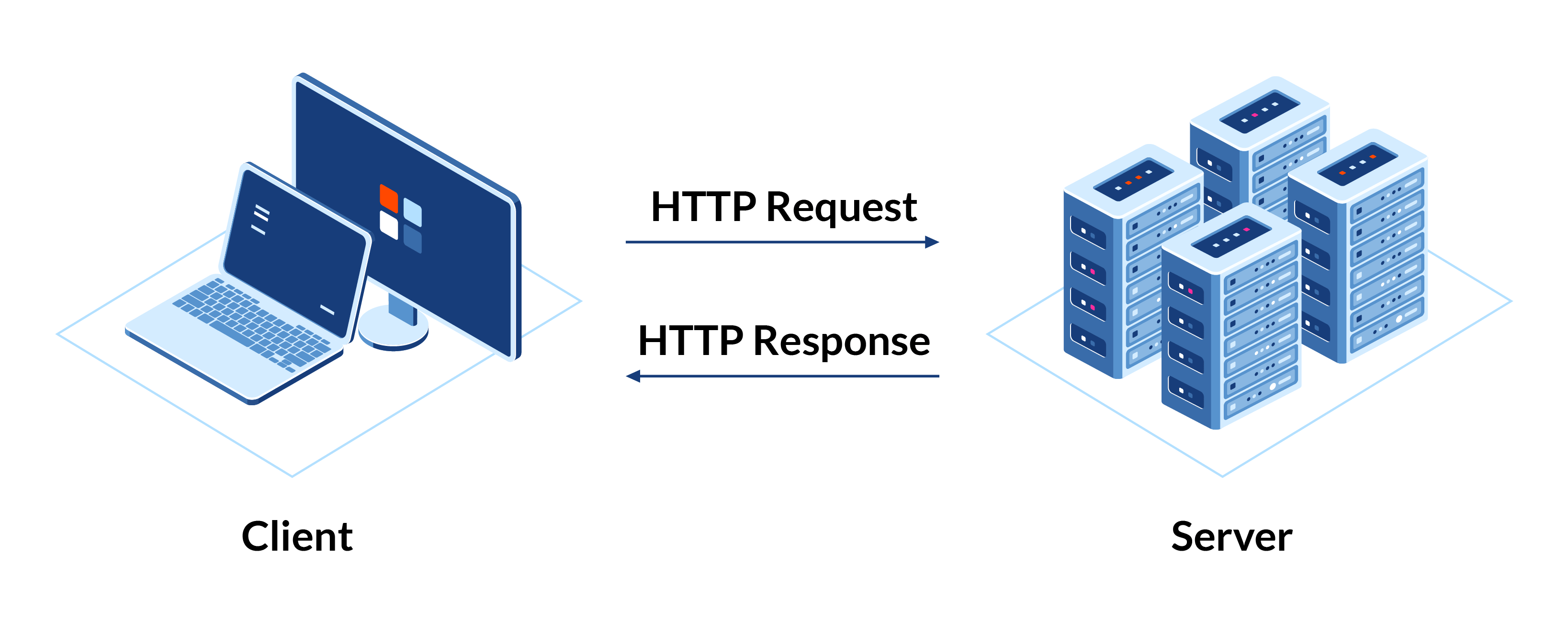What is an API?
An API (or "Application Programming Interface") is an application or service software intermediary that enables other applications or services to send requests to them and receive responses to those requests. The API must specify the parameters of the request and response such as data layout, necessary details, configuration, and safety settings.
An API helps applications and services to be combined, as the API is a "protocol" governing the communication between them. It gives developers flexibility when designing systems, and often enables broader monolithic networks to be divided into smaller individual networks with defined interfaces.
API types
Web service APIs
Web APIs are APIs that you can use utilizing the HTTP protocol. The API sets endpoints and formats for legitimate requests and responses. Web APIs include the APIs used for browser communications. Things including online alerts and cloud storage could count as use cases for Web API. Various Network APIs provide differing protection and privacy standards, including free, internal, and collaborator APIs.
Library-based APIs
Library-based APIs are those that require the developer to import or reference a script or binary function library from other software in order to exchange the information. The JavaScript APIs are normally a prime example of library-based APIs, such as those used in the web mapping services like Google Maps. The documentation for the Google Maps JavaScript API describes the HTML <script> element needed to load the API library.
Class-based APIs
Class-based API is a sub-type of library-based application programming interface. Such types of APIs may link to data structured around classes, typically found in object-oriented languages for application delivery, such as Java API or Android API.
To create applications, the Java API uses abstract classes. These classes have what you need to execute all sorts of functions inside these frameworks.
APIs that help execute operating system functions
It’s obvious that software applications are constantly interacting with the OS. And you may not know, but often this interaction is carried out through application programming interface. Windows APIs allow this intercommunication for the access to the file system and to the user interface.
API Architectural styles
To define approved data types and commands, the rules for API calls are specified by an API protocol. Different architectures of the API specify according to structures of a protocol.
- REST
REST (Representational State Transfer) is a service architectural style, defining a set of architectural constraints and agreements as such. A service is said to be RESTful if it satisfies the REST constraints. It is constructed to allow efficient use of a network focused on HTTP. RESTful APIs are separated from the backend and data storage. They are also cacheable. And The API can function whether it connects directly with an application, or via a load balancer intermediary.
- JSON- and XML-RPC
Remote Procedure Call (RPC) has in the center of this technology a procedure. If to compare it with the REST API types, RPC architecture puts the emphasis on the resources, since it is designed to call methods. Whereas, REST with the transfer of documents emphasizes the action.
- SOAP
Simple Object Access Protocol (SOAP) follows the RPC model and, as core principles, reveals procedures. This is developed by the W3C, which is the most commonly used network server specification. Nonetheless, SOAP type systems are rarely used, usually used for internal client usage or for resources that trusted collaborators ask for.
- GraphQL
GraphQL is the newest tool among these four. Using a single query, GraphQL APIs have a hypermedia-like ability to fetch the required data across multiple resources. It presents the maximum results when you choose to minimize the number of queries to the absolute minimum. GraphQL can be a good match to this challenge with its single query which addresses multiple resources.
Django REST Framework
Django Rest Framework is a platform that Quintagroup uses to provide our clients with RESTFul APIs.
Django REST framework (DRF) is an open-source, mature, and well supported Python/Django library that aims at building sophisticated web APIs. This is a versatile and completely functional toolkit, with a scalable architecture that can be customized. It enables developers to define the structure of URLs and not rely on an auto-generated one. DRF includes a range of authentication policies (including OAuth1a and OAuth2) and enables the creation of customizable schemes.
Web API built with DRF is rich and easily browsable, supporting out of the box a broad range of types of media, authentication, and authorization policies. Display data from the API may use regular function-based views or granular views with strong class-based views for more complicated apps.
Main features of Django REST framework are:
- Simplicity, flexibility, quality, and test coverage of source code.
- Powerful serialization engine compatible with both ORM and non-ORM data sources.
- Pluggable and easy to customize emitters, parsers, validators, and authenticators.
- Generic classes for CRUD operations.
- Clean, simple, views for Resources, using Django's new class-based views.
- Support for ModelResources with out-of-the-box default implementations and input validation (optional support for forms as input validation).
- HTTP response handling, content type negotiation using HTTP Accept headers.
- Pagination simplifies the process of returning paginated data in a way that can then be rendered to arbitrary media types.
- Publishing of metadata along with querysets.
- Permission classes and throttling management (API may feature a RESTrictive throttle for unauthenticated requests, a less RESTrictive throttle for authenticated requests, etc.).
DRF provides the freedom to expand and modify the resources of the system according to the demands of the programmer and significantly reduces development time. Such giants as Mozilla and Eventbrite use the Django REST system. Visit django-REST-framework.org for more information.
Why Use the Django REST Framework?
Django REST is comfortable in certain respects, and offers the following advantages:
- Its Web-browsable API is an incredible accessibility victory for developers.
- Authentication programs include the OAuth1 and OAuth2 sets.
- Serialization supports data sources from both ORM and non-ORM.
- It is highly adjustable. When you don't need more important features only using standard function-based views.
- This has detailed reports and strong encouragement from the developers' community.
What are APIs used for?
Now, let’s take a look at the ways you are most likely already using APIs for business purposes.

Website Analytics
If your business has a website, other metrics can be used to assess its effectiveness. It is essential to evaluate Website visits and customer transitions. To order to work correctly, you must instead integrate them into the website. So, obviously, you would require APIs for that.
Project Management Tools
Team-management strategies are a must when working in a multi-worker enterprise. Project management programs are great for communicating with peers but their data-sharing features are also important. It means the simple insertion and sharing of a file from your computer or another application with other people.
All the data-sharing happens between various services through an API. So, if you link some external reports via the project management system, you are simply using APIs. We are bringing the details from one program to another device, and your peers will see that straight away.
Search Engines
The collection of information from other systems is another means of utilizing APIs. If your business involves searching for the best online offers you'll need to use APIs. Third-party servers actually receive a request through an API, respond with what the user searches for, and then display the information on your website.
Or you may have just a small search box to help users find the right content on their website. Chances are the internal search engine you are using is actually an integrated search API for custom websites. Normally those are supported by Google, Bing, or other major search engines that allow API integration.
Online Payment Systems
PayPal, Stripe, Google Pay - you can embed all of these APIs into your website or application and clearly all of them have APIs. If your business involves transfers of money and digital payments, you clearly use the API. They are a powerful resource for e-commerce, as they guarantee the confidentiality of electronic payments, therefore providing their clients with the highest level of security. Online payment gateways is a fast and convenient way to collect money online.
Social Media API
A lot of companies are using Social APIs, and probably yours too. Virtual APIs have been a strong communication tool. The most common usage is the dissemination of information via different social networks. You may check how it works by clicking the small icons of our social media account in the bottom of this page. These tiny buttons are the result of social media API implementation.
Furthermore, if your website has an option to sign up, you can use instant login through social media accounts. This not only facilitates the sign-up but also helps to gather valuable market data. Once people sign in through their social networking profiles, you get the user base metrics.
API for your business with Quintagroup
There are lots of reasons why we'd suggest applying APIs to businesses like yours. APIs generally offer business incentives to scale up, foster creativity, and reach a wider audience. That's why it might be time to explore APIs, no matter the organization's size or business. APIs have the functionality to:
- Revenues rise
- Expand interest and consumer focus
- Allowing marketing and promotions
- Foster creativity in economic and technological terms
- Ease of incorporation of back-end data and programs

We will gladly help you with building useful APIs for your successful business. Feel free to contact us for more information and if you are ready for building value for your business.

